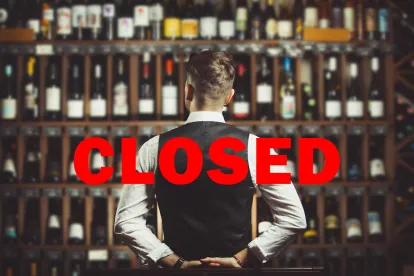In response to the Coronavirus (COVID-19) pandemic, the US government has undertaken significant action in recent weeks to offer relief to small businesses, which may be disproportionately affected by the pandemic and its fallout. This On the Subject provides a summary of the relief currently available to small businesses.
IN DEPTH
Small businesses may be uniquely affected by the Coronavirus (COVID-19) pandemic. Businesses with fewer than 500 employees accounted for 99.7% of US employer firms, according to the Census Bureau’s Annual Survey of Entrepreneurs from 2016. Of those companies with fewer than 500 employees, only half have a cash buffer large enough to support 27 days of their typical outflows, according to a 2016 study by the JP Morgan Chase Institute.
In response to the urgent need for assistance, the federal government has undertaken significant action in the past weeks, including the following measures:
1. Federal National Declaration of Emergency Under the Stafford Act
On March 13, 2020, President Trump declared a national emergency under the Stafford Act, which frees up more than $40 billion in federal funds and gives the Federal Emergency Management Agency a greater role in COVID-19 response efforts. This declaration also gives the US Department of Health and Human Services Secretary greater authority and flexibility to respond to the crisis. In his announcement, the president highlighted waivers for limits on the provision of telemedicine, removal of timing and bed limits for certain hospitals, and limits on the use of facilities so that emergency capacities can be quickly established.
2. Small Business Administration Economic Injury Disaster Loans
On March 6, 2020, the president signed into law HR 6074, The Coronavirus Preparedness and Response Supplemental Appropriations Act of 2020 (Supplemental Appropriation).
The $8.3 billion Supplemental Appropriation includes a provision that enables the Small Business Administration (SBA) to make an estimated $7 billion in low-cost loans to affected small business in the form of economic injury disaster loans (EIDLs). Affected small business owners can visit the SBA’s website for more information on how to apply for a disaster loan.
EIDLs are available only after a state governor makes a disaster declaration pursuant to the Stafford Act and the president subsequently approves the declaration. Ordinarily, local, state and federal officials jointly make a preliminary damage assessment to assess the need for federal assistance.
Once a state disaster declaration is approved, EIDLs offer up to $2 million in assistance per small business. The loans can be used to pay fixed debts, payroll, accounts payable and other bills that can’t be paid due to the disaster. The interest rate is 3.75% for businesses without credit available elsewhere (those with credit available elsewhere are not eligible) and 2.75% for nonprofits. SBA offers loans with long-term repayments, up to a maximum of 30 years.
How do I know if my company qualifies as a small business?
SBA measures small businesses on the basis of published size standards. Per the SBA, “A size standard, which is usually stated in number of employees or average annual receipts, represents the largest size that a business (including its subsidiaries and affiliates) may be to remain classified as a small business for SBA and federal contracting programs. The definition of ‘small’ varies by industry.”
The question of how “subsidiaries and affiliates” are incorporated into the size standards is a material issue for subsidiaries of larger organizations or portfolio companies, and may require legal analysis in some cases. SBA offers a guide on the affiliation requirements.
Does SBA require collateral for EIDLs?
Yes. Generally SBA requires collateral for EIDLs over $5,000, but it will not reject an application if no collateral is available. EIDL assistance is available to small businesses only when SBA determines they are unable to obtain credit elsewhere.
How do I apply for an EIDL?
You can apply online for an SBA disaster assistance loan.
How do I know if my area is eligible for EIDLs?
EIDLs are only available in areas where a disaster declaration has been approved. Click here for a list of disaster declarations.
3. Families First Coronavirus Response Act
On March 18, 2020, the president signed into law HR 6201, the Families First Coronavirus Response Act. This legislation includes significant changes that particularly affect small businesses with fewer than 500 employees, including changes to:
-
Mandatory paid sick leave
-
Family Medical Leave Act provisions
-
Tax credits for employers.
A detailed summary of HR 6201 and its employer-specific provisions can be found at our Coronavirus Resource Center.
4. Additional Proposals
In addition to the federal relief efforts detailed above, the Trump administration and congressional leadership have put forward proposals that include significant investments in small businesses, totaling hundreds of billions of dollars. It is too early to tell what specific relief will be made available, but small business interests will clearly be at the front and center of any legislative package proposed.





 />i
/>i

